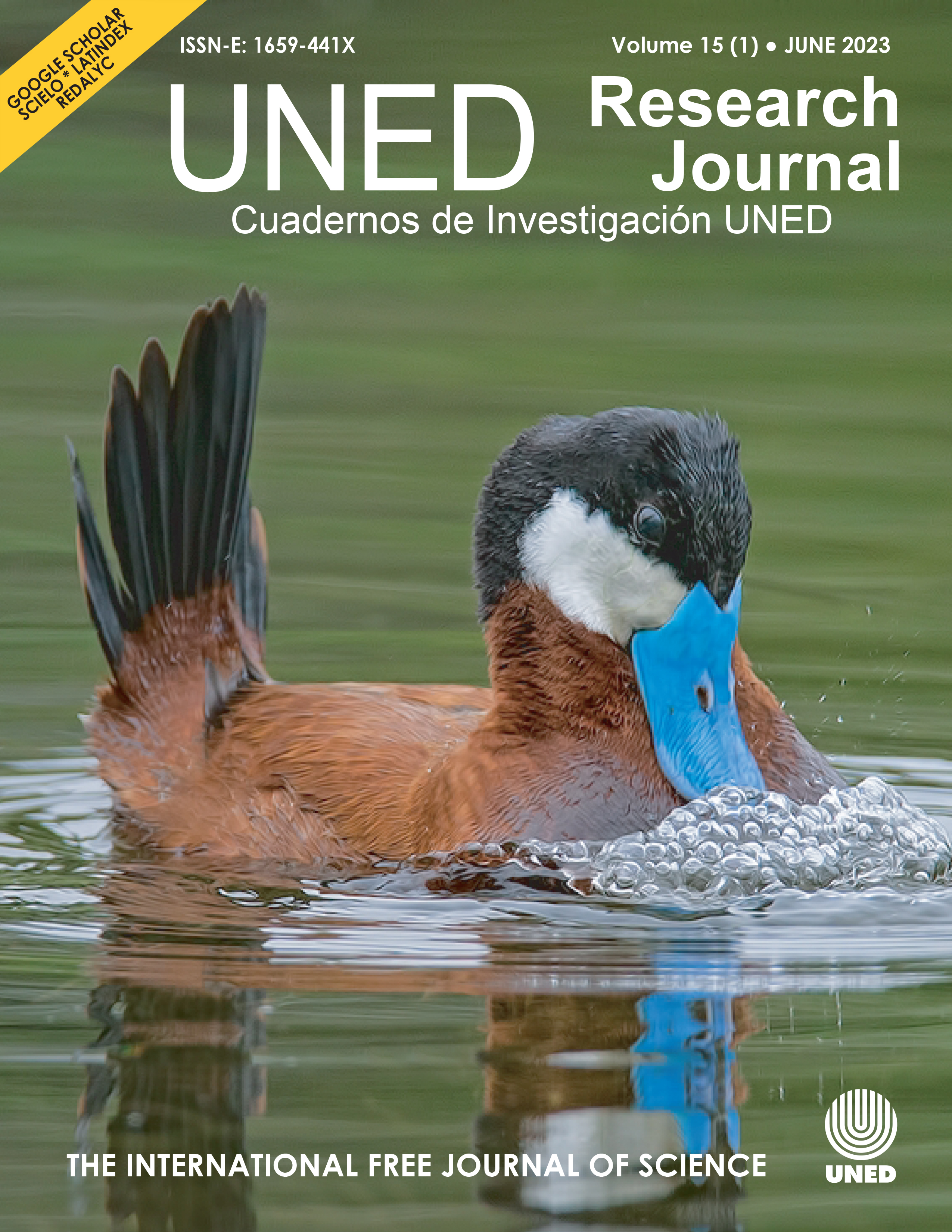Socio-agronomic classifiction of plantain-producing farms in the Caribbean region, Costa Rica
DOI:
https://doi.org/10.22458/urj.v15i1.4337Keywords:
gender, indigenous, incomes, agrochemicals, ODK, FormshareAbstract
ABSTRACT. “Socio-agronomic classifiction of plantain-producing farms in the Caribbean region, Costa Rica.” Introduction: Plantain is a food for millions of people in developing countries, and in Costa Rica its production is mainly located in the Caribbean region, with 3 354 farms, with low productivity and little technological adoption. Despite being a crop present in 56% of the small farms in the Limon´s province, there are few studies on the conditions of the farms and the people who grow plantain. Objective: To prepare a typology of plantain farms in the Caribbean region of Costa Rica according to productivity. Methods: 342 surveys were applied to farmers in six counties, corresponding to 28% of the plantain farms affected by the flooding of 2015. Results: Three types of farms were found, type 1 are the most efficient due the use of supplies and profitability, they represented 10% of the total farms and had the highest annual yields 49MT/ha). These farms have 0,8 ha of plantain crops, with densities greater than 2 000plants/ha, use corms of 500 to 800g, apply ammonium sulfate, shore-up the plants, bag the bunches, renew the plantations every 1 to 2 years and the people who attend these plantations are under 50 years of age. On the other hand, 66% of farms are type 3, producing 18MT/ha/year. Conclusion: The farms of the six counties have significant differences, especially in cultivated area and productivity, with farms smaller than 1ha being the most efficient and most profitable, and those of Alta Talamanca being the most biodiverse with 79% managed under agroforestry systems. Finally, plantain is a vulnerable production system, mainly due to agronomic management, the few phytosanitary controls and the weak training received by farmers.
References
Barboza, M. A. (2018). Caracterización de los sistemas de produccion caprinos en la región Huetar Norte de Costa Rica. [Tesis de Licenciatura, Universidad Nacional de Costa Rica]. https://bit.ly/3l7UsGT
Barraza, D., Jansen, K., Wendel, de Joode, B., & Wesseling, C. (2011). Pesticide use in banana and plantain production and risk perception among local actors in Talamanca, Costa Rica. Environmental Research, 111(5), 708–717. https://doi.org/10.1016/j.envres.2011.02.009
Calderón, L. (2014). Breve caracterización del territorio Talamanca-Valle de la Estrella. https://bit.ly/3liAxoV
Canto, B., Orozco, M., Martínez, L., Manzo, G., James, A., Rodríguez, C., Islas I., Beltrán, M., Guzmán, S., Garrido, E., Higuera, I., & Sandoval, J. (2015). Bananos y plátanos, frente al cambio climático. In I. Higuera-Ciapara (Ed.), Hacia dónde va la ciencia en México. Ecosistemas, Plagas y Cambio Climático (pp. 61-77). CONACYT.
Dita, M. A., Waalwijk, C., Buddenhagen, I. W., Souza Jr, M. T., & Kema, G. H. J. (2010). A molecular diagnostic for tropical race 4 of the banana fusarium wilt pathogen. Plant pathology,59(2), 348-357. https://doi.org/10.1111/j.1365-3059.2009.02221.x
Holdridge, L. R. (1987). Ecología basada en zonas de vida. Instituto Interamericano de Cooperación para la Agricultura (IICA).
Instituto nacional de Estadística y censos. (2015). VI Censo Nacional Agropecuario: Resultados Generales. https://bit.ly/3KG7czw
Instituto Nacinal de Estadistica y Censos (INEC). (2020). Encuesta Nacional Agropecuaria 2020: Resultados generales de la actividad agrícola y forestal. http://sistemas.inec.cr/pad5/index.php/catalog/280/download/3818
Manso, P., Stolz, W., & Fallas, J. C. (2005). El régimen de la precipitación en Costa Rica. Revista Ambientico, 144, 7-8
Robinson, M., & Ramírez, R. (2013). Diagnóstico base para determinar las características generales de la población y su entorno, de la zona afectada por el Corredor Fronterizo con Panamá. https://bit.ly/3Z5GYdQ
Román , M., & Morales , N. (2018). Región Huetar Caribe : situación socioeconómica y principales desafíos. https://bit.ly/3JUbZg7
Russo, R., & Ureña, E. (2006). The banana sector in the atlantic region of Costa Rica. Proc. Fla. State Hort. Soc. 119, 52-55. http://usi.earth.ac.cr/glas/sp/50000242.pdf
Sánchez-Brenes, R. J., & Arboleda-Julio, E. (2021). Evaluación de la sostenibilidad en el cultivo de plátano, Caribe Sur, Costa Rica. Revista de Ciencias Ambientales, 55(1), 250–270. https://doi.org/10.15359/rca.55-1.12
Vallejo, M., Chacón, M., & Laprade, S. (2020). Lineamientos para el diseño de NAMA musáceas (Nota Conceptual). http://www.mag.go.cr/asuntos-internacionles/Nota-Conceptual-NAMA-Musaceas.pdf
Vargas, A., Watler, W., Morales, M., & Vignola, R. (2017). Ficha técnica cultivo de banano. https://www.mag.go.cr/bibliotecavirtual/F01-8205.pdf
Published
How to Cite
Issue
Section
License
Copyright (c) 2023 UNED Research Journal

This work is licensed under a Creative Commons Attribution 4.0 International License.
Note: This abstract contains an incorrect copyright due to technical issues. Authors who publish with this journal agree to the following terms: Authors retain copyright and grant the journal right of first publication with the work simultaneously licensed under a Creative Commons Attribution License that allows others to share the work with an acknowledgement of the work's authorship and initial publication in this journal
All journal contents are freely available through a CC BY 4.0 license.
CC BY 4.0 is a Creative Commons: you can copy, modify, distribute, and perform, even for commercial reasons, without asking permission, if you give appropriate credit.
Contents can be reproduced if the source and copyright are acknowledged according to the Open Access license CC BY 4.0. Self-storage in preprint servers and repositories is allowed for all versions. We encourage authors to publish raw data and data logs in public repositories and to include the links with all drafts so that reviewers and readers can consult them at any time.
The journal is financed by public funds via Universidad Estatal a Distancia and editorial independence and ethical compliance are guaranteed by the Board of Editors, UNED. We do not publish paid ads or receive funds from companies.




